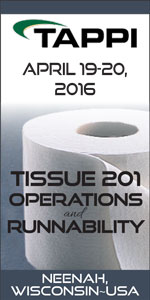 |
||||||||
| February 3, 2016 | ||||||||
| Minimize boiler tube scale deposit |  |
|||||||
|
· Subscribe to Ahead of the Curve · Newsletters · Ahead of the Curve archived issues · Contact the Editor
|
New Study Shows How Consumers Drive Sustainability, Packaging Trends The ULS (Use Less Stuff) Report has published a comprehensive study on packaging efficiency titled A Study of Packaging Efficiency As It Relates to Waste Prevention. Besides providing contemporary results, the research examines trends in retail packaging since the publication of the original study in 1995 and the follow-up in 2006.
To gauge efficiency, over 300 containers in fifty-six grocery categories were examined to determine the amount of packaging required to deliver a given amount of product. Study methodology gave credit for source reduction, recyclability, and use of recycled materials. The methodology, findings, and conclusions were reviewed by the Laboratory of Manufacturing and Sustainability (LMAS) at the University of California, Berkeley. Key learning from the research includes the following:
Lilienfeld noted that “in general, the environmental impact of food is up to ten times greater than the impact of its packaging. So, a bit more portion control or ready-to-eat food packaging can actually reduce waste, as these packages ensure that the food inside is actually eaten rather than thrown away.” A Study of Packaging Efficiency As It Relates to Waste Prevention is available at The ULS Report website, http://www.use-less-stuff.com. The ULS (Use Less Stuff) Report (http://www.use-less-stuff.com) is an environmental newsletter in publication since 1994. Editor Bob Lilienfeld is a widely recognized authority on waste prevention and co-author of the book Use Less Stuff: Environmental Solutions for Who We Really Are. Now that you are Ahead of the Curve, stay there by joining TAPPI. |
|||||||
 |
||||||||
